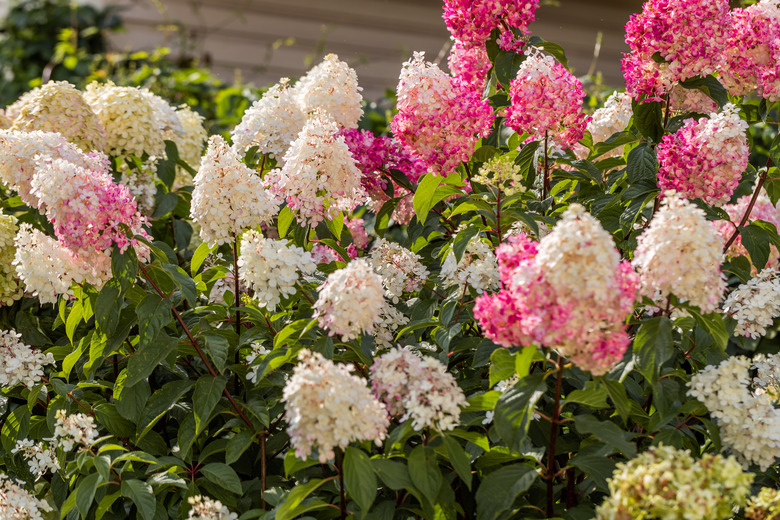When To Prune Limelight Hydrangea
We may receive a commission on purchases made from links.
Limelight hydrangea (Hydrangea paniculata 'Limelight'), with its enormous and elegant blossoms, is likely to be one of your favorite garden shrubs. The large flowers start off as a unique shade of green and then age to deep shades of pink and burgundy and persist on the bush through frost for months. The Limelight hydrangea is a perfect shrub for DIY florists who love to create fresh bouquets out of their giant blooms.
Whether you keep your Limelight as a center-of-attention specimen plant or use multiple shrubs in a showy hedge, keeping the blooms coming requires occasional pruning. It's not difficult to prune Limelight hydrangea properly as long as you learn a few guidelines for how to prune and when to prune.
Types of Hydrangeas
Types of Hydrangeas
It's not uncommon for gardeners with their first hydrangea plant to assume that all hydrangeas are similar. But not all hydrangeas are like the popular bigleaf hydrangea (Hydrangea macrophylla) with its oversize leaves and blossoms.
There are five main species of hydrangeas:
- bigleaf, smooth (Hydrangea arborescens)
- panicle (Hydrangea paniculata)
- oakleaf (Hydrangea quercifolia)
- climbing hydrangea (numerous species, including H. anomala, H. barbara, and H. hydrangeoides)
Plus, there are countless varieties and cultivars in each species. Each has its own cultural and pruning requirements, and these differ significantly among the species.
Limelight, for example, is an attractive and popular cultivar of Hydrangea paniculata. These perennials should do well in a full sun garden in U.S. Department of Agriculture plant hardiness zones 3 to 9 if you offer it the best cultural care for panicle hydrangea, including the pruning tips in this article. But the best practices for Limelight may not work well for other species, and it's important to confirm the species of your hydrangea before proceeding with the method described here.
How to Prune a Limelight Hydrangea
How to Prune a Limelight Hydrangea
The method to use for pruning Limelight hydrangea will depend on the reason for pruning.
Remove Dead Branches From Your Limelight
If your garden is large and the planting site for Limelight is ample, a major annual pruning is not required for this hydrangea cultivar. Instead, simply use a sharp pruner to take out dead or damaged branches as you note them throughout the year.
Gentle Pruning to Shape Your Limelight
In late winter or early spring, give Limelight a slight haircut to spiff up the shape. To shape this shrub, use diagonal heading cuts, which redirect growth or shorten small branches. The highest part of the diagonal cut should be just 1/4 inch above a bud.
Size Pruning for Your Limelight
Over time, your Limelight hydrangea transplant will grow into a large shrub that is up to 8 by 8 feet. If you need to cut it back to keep the size down, a more serious trimming might be in order. Take out up to one-third of the bush's overall height and spread every year in late winter or early spring, pruning the branches evenly on all sides.
Tip
If you recognize the limitations of your space before installing Limelight, consider a more compact shrub, such as the cultivar Hydrangea paniculata 'Little Lime.' The 'Little Lime' hydrangea has many of the same characteristics as beautiful Limelight but only grows to half the size.
Need to see the pruning process visually so you don't make the wrong cut? Check out this eHow video:
When to Deadhead Hydrangea
When to Deadhead Hydrangea
Deadheading simply means removing wilted flowers from a plant in order to keep the hydrangea looking its best. This can also encourage additional hydrangea flower growth in your garden. Use a sharp, clean pruning tool and snip off panicles that are browning or brown.
Don't deadhead right up through dormancy. Stop deadheading these hydrangea shrubs in mid to late fall. Leave the remainder of the spent flower heads on the bush for winter interest.
